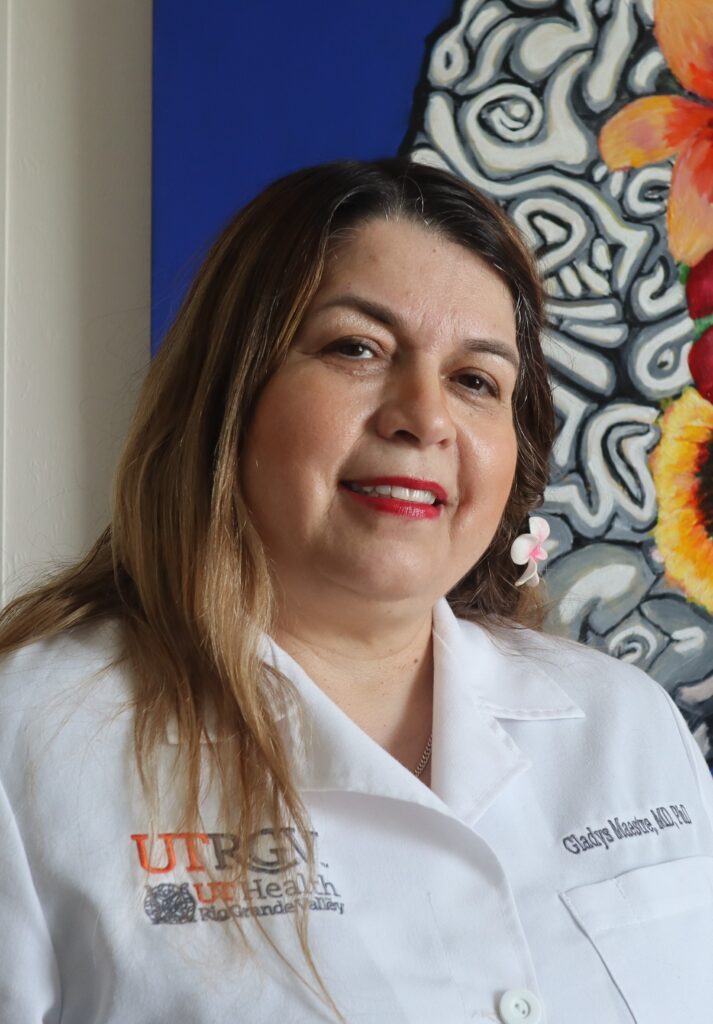
HARLINGEN — Officials at the University of Texas Rio Grande Valley are touting the institution’s incipient National Institute on Aging designated Alzheimer’s Disease Research Center as a critical step in addressing the disease locally and understanding it nationally.
The designation, part of a collaboration between UTRGV and the University of Texas San Antonio, was announced earlier this month.
Dr. Gladys Maestre, a UTRGV professor of neurosciences and the director of the Valley’s Alzheimer’s Disease Resource Center for Minority Aging Research, says the center is expected to open its doors in late October in Harlingen. It was unclear as of press time where precisely it would be located.
Maestre paints a grim picture for Alzheimer’s in the Valley. She says Starr County has the highest proportion of Alzheimer’s in the nation. The prevalence of the disease makes sense, she says, because of contributing factors that are common here like family history, hypertension, diabetes, alcoholism and depression.
Often, despite those comorbidities, Alzheimer’s goes undetected, Maestre said.
“When the disease is manifested, it’s too late,” she said. “Because at the beginning, it’s very personal. You kind of notice the forgetting here or there, lost things, lost money; but then, you compensate. ‘No, I’m going to put the keys in the same place. I’m going to have 10 pairs of glasses.’ Whatever.”
People hide the disease as long as possible, Maestre said. They’re often ashamed. They dread saying the word “Alzheimer’s” to their children.
Eventually, despite their best efforts, those people can’t hide their condition anymore. They’ll start seeing things. Dead people. Monsters. They’ll mix up TV shows and real life, Maestre said, and relive their childhood, tragedies and traumas in particular.
Occasionally a person suffering from the disease will have a moment of clarity, Maestre said, a window of lucidity when they can tell her about living a life that’s like trying to wake up from a dream and not being able to open their eyes.
Maestre says when doctors in the Valley see an Alzheimer’s patient for the first time it’ll be in an advanced stage like that, the patient often brought in from a nursing home or from a loved one who’s worked themselves to the bone caring for them.
“It’s impossible not to feel the pain, but there is hope,” Maestre said.
There’s no cure for Alzheimer’s, but it’s easier to cope with cases that aren’t as advanced.
“By the time this is fully installed, there is very little we can do,” she said.
Maestre hopes Alzheimer’s work at the new center can improve the quality of life for Valley residents suffering from the disease.
The center will include support groups and education programs. Lots of it comes down to learning how to cope with the disease, Maestre says, and teaching family members how to cope with the disease.
Lots has to do with eliminating stigmas around the disease, she says.
“A lot of jokes have to do with Alzheimer’s,” Maestre said. “I remember 20 years ago we would joke and call somebody Schizophrenic. Now we still keep making jokes about Alzheimer’s. So that doesn’t help somebody who is worried about it.”
The center, Maestre said, will also include treatments involving the music and the arts. Even architecture. Maestre is largely critical of what she describes as uninspired, uniform architecture in the Valley. She thinks stimulation is the key to defeating the disease.
“The cities have been built in a way that’s not very stimulating,” she said. “Sometimes our own homes are not very stimulating. That’s one thing I notice here that may be contributing to the high rates of Alzheimer’s.”
Maestre says the center will hit the ground running. In the first week of November its clinics plan on selecting 150 individuals over 50 with memory complaints to examine for free.
The center, Maestre says, will be a game changer.
“People are very hungry for information,” she said. “There is a lot of suffering that is just hidden there among people that have somebody already in the house. And they fear the diagnosis. Now they have a place to go.”



